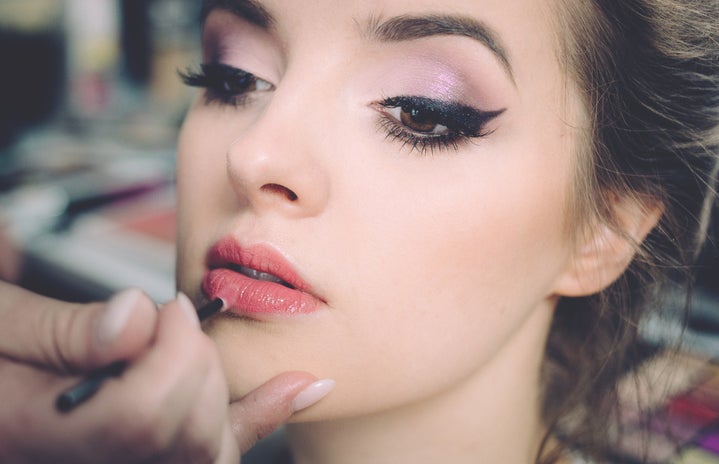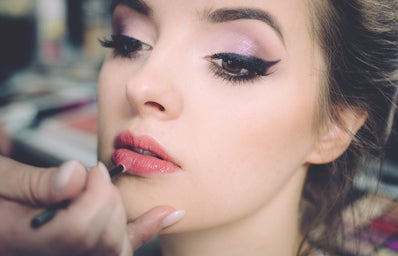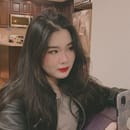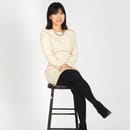Although sheet masks have recently become a popular beauty trend here in the U.S., they have been an established and integral step of the Korean skincare routine for years. While most people typically use sheet masks as last-minute skin saviors, many K-Beauty fans participate in the #1day1mask trend of wearing a sheet mask daily. Because everyone’s skin is unique and reacts differently to each product, there have been mixed responses to this trend: some people’s complexions have only gotten healthier, brighter, and dewier, others’ skin worsened with blemishes or irritations, and finally, for a few, there were no visible results whatsoever. As a Korean-American who is an avid believer in and supporter of K-Beauty, I decided to try sheet masking for two weeks straight to test whether or not the #1day1mask trend is worth the hype.
Before you read further, you should know what my skin profile is: I am currently 19 years old, so my skin definitely hasn’t shown any signs of aging, and I don’t have particularly serious eye bags or dark circles. However, like most people my age, I do suffer from occasional breakouts, and I still have a lot of dark spots and scarring from when my acne was at its worst (thanks puberty!). In addition, I have huge pores on and around my nose, and blackheads all over the bulb of my nose. My skin type is combination, with an oily T-zone and dry U-zone. In case you don’t know where the T-zone and U-zone are, here is a basic layout on a blank MAC face chart:
WEEK 1
DAYS 1 & 2
I decided to start off the first week of this challenge with all Innisfree masks. For the first two days, I applied the Innisfree Pomegranate It’s Real Squeeze sheet masks. According to the Innisfree website, it is “a sheet mask with freshly squeezed pomegranates [known as the King’s fruit] to make the skin firm and radiant while reducing wrinkles.” The It’s Real Squeeze sheet mask series is free of parabens, artificial colorings and mineral oils. In addition, the masks contain a Jeju green complex, which consists of green tea, tangerine, cactus, camellia leaves, and orchids, and the sheets are triple-layered to help with water-retention.
On both days, I wore the masks for about 20 minutes, and I immediately felt super glowy and hydrated right after I took them off. But, the masks did leave behind a sticky residue on my face. This layer of hydration was still there when I woke up the next morning. However, on the second morning, I surprisingly saw a new pimple right above my lip. Despite this blemish and the fact that I’m not sure if these masks made my face any firmer, they did keep my skin healthy and hydrated, thus giving me the youthful, glowy look that is so coveted in K-Beauty.
DAYS 3 & 4
On the third day, I tested out the Innisfree Hyaluronic Acid Skin Solution sheet mask. Since hyaluronic acid is a dry-skinned skincare lover’s holy grail ingredient, and the Innisfree website’s description boasted that this mask would leave me with “deeply hydrated skin for a dewy, supple look,” I was expecting a lot of moisture – even more than what the pomegranate mask gave me. Interestingly enough, although it was moisturizing, it wasn’t as moisturizing as the pomegranate mask, nor did it leave behind extra essence. I, personally, think that the pomegranate mask would be great on a lazy day when you can’t bother to do your whole skincare routine (although it’s not recommended to replace your whole routine with a single sheet mask!), whereas the hyaluronic acid mask would work better as an addition to your normal routine.
On the fourth day, I reached for the Catechin Skin Solution mask: an “ultra-lightweight cotton sheet with Catechin from Green Tea Extract to provide antioxidant effects while improving the look of skin’s texture and tone.” After reading the Innisfree description, I still had no idea what catechin was exactly, so I turned to my trusty old pal, Google: According to Wikipedia, “Catechin is a flavan-3-ol, a type of natural phenol and antioxidant. It is a plant secondary metabolite, [and] belongs to the group of flavan-3-ols, part of the chemical family of flavonoids.” Despite all of this fancy science, I honestly didn’t see much of a difference with this mask, nor did I feel much hydration. Out of all the masks I tried in the past four days, the catechin mask was my least favorite. To be fair, even though I didn’t see any improvement in my complexion, I also didn’t develop any new blemishes, and prevention is just as good as any treatment.
DAY 5
After a fever, a seriously runny nose, a sore and phlegm-filled throat, and mild-but-annoying headaches, my skin was not looking good. The acne along my jawline had multiplied and was much larger in terms of size and swelling. Plus, my face just looked dull and tired. So, I decided to slap on the Innisfree Collagen Skin Solution sheet mask. Collagen is a protein found in our bodies that replaces dead skin cells and helps give our skin strength and elasticity, so I was hoping that this would make me look a bit more alive. Immediately after taking the mask off, I noticed that my skin did look brighter, but I wasn’t sure if this was some kind of placebo effect or if the mask actually did something, so I decided to wait until the next morning before I made my final vote. The next day, my complexion was still somewhat bright, but a touch oily from sleeping.
DAYS 6 & 7
I slapped on the catechin mask again on days six and seven. Once again, they didn’t seem to do much for my skin, and a few new pimples popped up next to my eyebrow and along my jawline after using the mask.
WEEK 2
DAY 8
For Day 8, I picked out the Innisfree Rose It’s Real Squeeze sheet mask. First of all, the scent is amazing – a light rose smell that isn’t offensive nor irritating to my sensitive, fragrance-hating skin. Prior to putting the mask on, my face was super angry and itchy, so I was weary of putting on anything that could possibly make it worse. To my surprise, the mask actually didn’t further worsen my skin’s condition. In fact, it seemed to calm it down a bit. When I woke up the next morning, my acne also seemed to be less inflamed.
DAYS 9 & 10
On Days 9 and 10, I decided to use up my two Freeset Donkey Milk Skin Gel Mask Pack Aqua sheet masks. Donkey milk is a popular K-Beauty ingredient due to its hydrating properties and nutrients, which includes four times the vitamin C as cow’s milk, casein, lactose, vitamins A, B1, B2, B6, D, and E. I noticed that after I finished up my skincare routine and put on one of these, my skin started burning in an unpleasant way. Perhaps it was because my skincare and the mask’s chemicals just don’t work well together since I have used this mask in the past and didn’t have this problem before. Luckily, in the morning my skin looked bright and hydrated! Most of my pimples died down, so I only had a lot of dark spots from this week’s breakout. I decided to skip my morning skincare routine since I had to cram for my 11:00AM Chinese exam, but my face didn’t feel particularly dry, even though it has been dehydrated for the past few weeks. Yay for donkey milk!
DAYS 11-14
The final four days of this experiment perfectly matched up with my final four sheet masks: the Goodal Lily Whitening Masks. The first thing I immediately noticed was the “whitening” claim, which I hoped was a mistranslation for “brightening.” My skin often gets dull and tired-looking whenever I’m stressed out, so anything brightening is uber-helpful to me during finals season, and I was excited to see the masks’ effects on my skin. According to Style Craze, lily has the ability to reduce scars and lighten skin tone, which explains this mask’s whitening claim. It did make me look brighter and hydrated, but only seemed to produce temporary results.
In conclusion, I don’t think the #1day1mask trend worked for me. I didn’t really see any significant change in my skin throughout the two weeks, other than the coming and going of pimples; my dryness, texture, and acne are all still very much present. In addition to the lack of improvement, maintaining this #1day1mask routine would be somewhat costly for me as a college student whose only income comes from my part-time jobs. Typically, cheaper sheet masks are around two to six dollars each, making a two-week trial approximately $30 to $80 depending on which ones you buy. High-end masks can get even higher, with Dr. Jart masks priced at $12 and SK-II masks at $17 each. That being said, if you’re curious about what your results would be and you have the funds to do this, go for it! Skin is something that’s unique and personal to each of us, so what works for you might not do anything for me. I, personally, loved the Innisfree sheet masks in the collagen and rose versions and the Donkey Milk masks. I will most definitely buy them again for the occasional pampering day!
We hope this two-week experiment provided you with helpful information and a glimpse into what a day in the #1day1mask life is like. Whether you’ve decided to try out the trend or not, whip out one of your sheet masks tonight and have a relaxing evening to yourself before finals begin. Happy masking!



